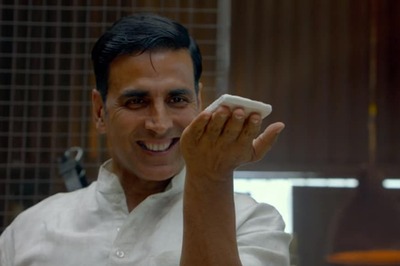
views
Dangerous Ishq, Sher Khan, Joker, Ra.One, Raaz 3 and Don 2. What's common in all these films? Well, apart from boasting of big stars, these films are especially being made to suit the 3D multiplexes.
Made at a moderate budget, Haunted was considered hit by any standards. The grand success of Haunted has inspired Bhatt to go for more. His upcoming Raaz 3, with Emraan Hashmi and Bipasha Basu in the lead, is expected to hit the theaters in 2012. Several other films with mega star casts are also slated to release before December, next year.
Is the Hindi film industry banking too much upon the 3D phenomenon?
The huge commercial success of Avatar has changed the perception of film viewing to some extent. The technology used in Avatar added a unique grandeur to a simple storyline, and eventually led it to a roaring success worldwide. This prompted Hollywood studios to take risk and invest in latest technologies. The box office report of Pirates of the Caribbean: On Stranger Tides, Kung fu Panda-2 and Transformers: Dark of the Moon, did not betray them either.
As per the general trend, other film industries throughout the world have started to follow the Hollywood. They are also coming up with new 3 D projects.
Does that mean the future of Bollywood belongs to the 3D technology.
Is 3D going to replace the popular filmmaking technique in the same way as it had displaced the black and white filmmaking some years ago?
It's still very early for 3D films in India. Although, Chota Chetan, is credited with first Indian 3 D movie, way back in 1984, but the technology used in Chota Chetan was nowhere close to what the industry is using nowadays.
Although, Vikram Bhatt, the director of stereoscopic 3 D Haunted, gambled successfully but, on an average, the cost of the film goes up by 20-30 per cent due to the technique required to make a 3 D film.
Further, the crew needs to be specially trained, which makes it more problematic for the directors to find a capable crew. They might hire the crew from the Hollywood initially, but they need to generate a talent pool to sustain in a longer run, which seems tricky as the standard of education in the animation and multimedia sector is not at par with the bests of the world.
Thus, the cost of making a 3 D film is not going to come down in near future.
The transition to Eastman colour films from the black and white films had happened over a period of several years, till the time the audience had got used to the new technique. So, the bombardment of 3 D films on Friday after Friday is not going to condition the Indian mindset. It will take time to adjust, particularly in semi-urban centers and single screens. No producer would like to see his films released only on urban centers.
Probably, this is the reason behind taking established stars in major upcoming 3 D films, so that the audiences could be drawn at least in the names of those actors.
Now comes the number of cinema hall owners, who need to incorporate new projection techniques, before showcasing 3 D films in a proper manner. The extra cost of infusing a new projection system will have its effect on the ticket prices, and an increase in ticket price can have an adverse effect on the business.
The bone of contention between the producers and the hall owners will not be an easy thing to settle down. The increase in cost price can change the dynamics of the business altogether and then the settlement will have to be done as per the popular choice rather net viewer ship.
And, if the audience is not accustomed to 3 D films till this debate arises, the situation will be much more complex. Therefore, it is still very early to say that the 3 D films are here to stay.



















Comments
0 comment